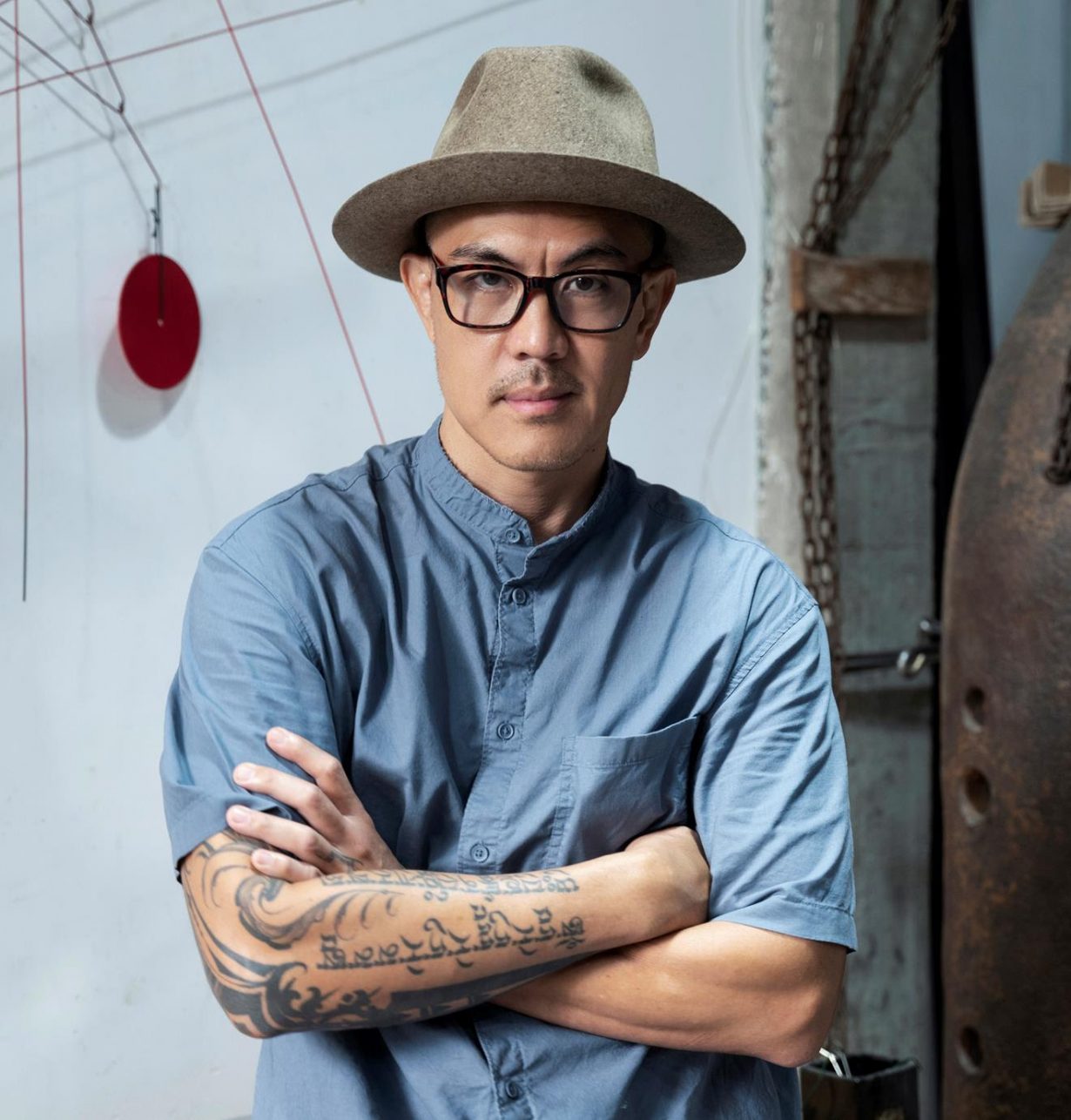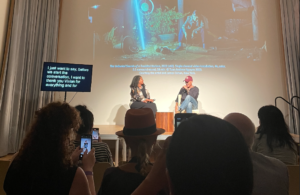VP: In Frank Rose’s recent NYT piece about you, he described your work as “haunting artifacts,” which to me seems applicable to a lot of Vietnamese cultural heritage stemming from the Vietnam war. Have you come up with your own definition of what heritage is in term for your art practice, or have you thought about heritage differently since you began your art making?
TAN: Wow, starting off with a very challenging question… I think that both you and I, and many people who are from the Vietnamese diaspora, as we find a bit of grounding in our own identity, the more grounded we feel, the more we understand that we become less grounded. The Vietnam war is such a complicated event politically, culturally, and personally for many people. When I think of heritage, I think of the stories we inherit. And there are stories we inherit, en masse, as cultural beings that have had some footing in this place we call Vietnam. But because the history of Vietnam is so complicated, the stories we inherit are so different from one another. The viewpoints on the war are so different even between families that were raised in the South—extremely different from one another—families that were raised in the North, extremely different from one another. So, when I think of heritage, I think of things we inherit as a group, but that thing we inherited as a group is so multifaceted, nuanced, and specific that I don’t know if we can apply this idea of a “general heritage.” I feel really strongly about that.
A lot of my work is about storytelling. It’s still remarkable for me to see or get messages from people who are sitting through sixty-minute videos in a museum setting. It is unheard of. Because when people walk through a museum, they’re excited, there is a desire to move about this space, to absorb as quickly as possible, and to expect people to sit down in a dark space for sixty minutes sometimes feels impossible. As the artist who made these films, it’s mind-blowing to me. I don’t expect that, but I am completely honored by that, that people would give their time to sink into a space, into a narrative, and possibly into a history that they are not familiar with, which is often the case.
VP: I think with a lot of your pieces, you are producing cultural heritage—it is very much an interplay with the heritage one has with storytelling. It is super interesting as a form of heritage-making without saying “this is what happened.”
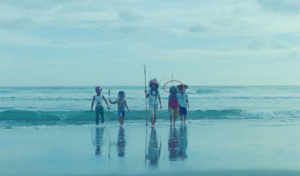
Still from “The Boat People,” 2020.
TAN: It’s very much my intention to challenge people in the way they’ve understood things and histories. I really don’t want to leave people with the idea that there is a strong message in the films. I really think it is important to have people walk away from the work with questions. I think that is more important than leaving the work with the feeling that they “understand what he was trying to say” or “I understand the message.” I don’t want to give a message. Advertising and propaganda, that is what they do. They give messages. They deliver the message and it has to be straight, concise, and clear. I don’t want to be propaganda, nor do I want to be advertising, nor do I want to “entertain” through the video works…I do want to captivate people. I want to draw them in. But I do think there is a difference between entertainment and being captivating…
What year did you come to the US?
VP: I came in 1998.
TAN: Ninety-eight, so you were born in 1990?
VP: That’s correct.
TAN: So you’re my sister’s age. My sister was 1989.
VP: How many siblings do you have living in Vietnam? Or are they mostly living in the U.S. now?
TAN: So there are only three of us. I have a brother and a sister. I am the oldest. My brother moved here (Vietnam) about seven years ago, much to my mother’s delight [chuckle]. My sister was with my mom for a very long time in California, and then she left to get a Master’s at NYU. She’s graduating today, actually. So, we are kind of spread out, but I have a brother here. He’s a dancer.
VP: So this next question is related to being in Vietnam; prior to being an adult who gets to make a decision about how and where to do things, had you gone back often while growing up in California?
TAN: Yeah. I managed to save enough of my financial aid money when I was in college to go to Vietnam to visit the family I had here, which was primarily my grandmother. That was in 1998, so we might have crossed paths [laughs]. I had also gone back once or twice after that before I made the move to just be based here.
VP: Were your parents supportive of that decision?
TAN: You know, my dad is actually kind of an open and liberal-minded person. My mother was a little confused about the reason for why I would want to be based here, after I had spent so much time and effort to get my MFA. [Imitating his mother] “You got your MFA in the U.S., don’t you want to work in the U.S. to make money?” She didn’t understand that I wasn’t studying graphic design or another commercial field in the arts. I studied fine arts, which is one of those majors you don’t come out of school getting a job right away. Well, maybe now people do. Was it surprising? Yes. But they rolled with it […] I wanted to be with my grandmother for a while, which is why I returned to Vietnam and wanted to be here.
I also felt Vietnam had a special energy at that time. The late nineties when I came back and the early two-thousands when I came back and stayed, it was a very interesting place politically and in regards to what was happening in the mediascape. I don’t know if you were familiar, but films were changing from propagandistic, government-funded films. Films like Gái nhảy (2003) or Những cô gái chân dài (2004) [laughs] and I kind of found my way into that. And advertising at the time was still fairly new. It kind of sat next to old-school communist propaganda. That dichotomy was irresistible to not look at and try to figure out what was going on, what kind of ideologies were being born out of this very specific and special moment in Vietnamese cultural development.
VP: There is always a tension between advertising and art production. Not to mention, historically, artists in Vietnam have had to endure some tough restrictions after the war, so as a professional artist, what were some of the major challenges you found when you came back?
TAN: Honestly, just to be open with you. I did this film thing, that was my ticket back. It was a struggle for me. Even to this day I don’t talk about that project much. There was hardly any kind of infrastructure in terms of the arts during the mid-2000s in Saigon. Gallery Quynh, a commercial gallery had just opened for a year when I came back. I had applied for a Fulbright, and I had applied for a teaching position at the museum at the School of Cinema & Theater a couple years before and they like “no, we don’t allow foreigners to teach here.” There was no infrastructure.
I actually knew an artist who was very influential in my early development, his name is Dinh Q. Lê. Dinh and I thought about an artist-ran non-profit artspace. I pulled in a cinematographer, Phu Nam, who I was working with and Tiffany Chung. We all got together and started this space called Sàn Art. Sàn Art became, and I would say I am very biased about it, the most important kind of spaces for thinking and talking about contemporary art in the nation. I am not taking anything away from Nhà Sàn in the North. I think they’re very important too, but a lot of artists from the North started coming south. And Sàn Art did this really amazing thing.
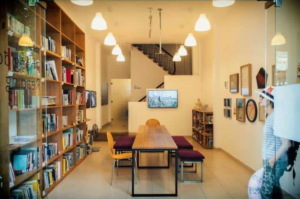
Sàn Art in Ho Chi Minh City, Vietnam.
We brought on Zoe Butt, who is a curator from Australia, and we started this residency program, which I think was very successful because it filled this gap, this void in the educational system in the arts in Vietnam. We were able to create a space for discussion and critique. That is so essential in developing and evolving young artist minds. We managed to bridge this gap between the international art world and the local art scene. A lot of the young artists coming through this residency program ended up having multiple shows internationally. Not to emphasize Sàn Art so much and pat ourselves on the back, but that was a really amazing time. What I am trying to say is that; we didn’t have a community, so we built it.
VP: That is a big task to accomplish and you managed to do that. In terms of helping young artists, when you started your career, did your parents come to the shows? How were they responding? What was that conversation like?
TAN: I made a couple of videos in college, which I showed my dad, and we had some interesting discussions. Back then my dad and I had a really strange relationship… I was a really rebellious child [laughs] but I could see a spark of him being a little proud. One of my first group exhibitions was in LA at this space called Roy and Edna Disney CalArts Theater and it was curated by a mentor of mine […] and they (my parents) came to the show. They were proud. It was great. It was a surprise for me. I’d always imagined they’d be confused at these events, but they seemed rather settled and they had a kind of glow about them that was very reassuring.
VP: It feels great when you have parental support […] More on the community, and in-line with the conversation you had yesterday with Tao, you do a lot of interviews and public events, were there any questions you’ve had in the past that really make you question the work you do? I understand you like for your work to leave other people with questions, but have you had a question that really challenged the way you do your work?

Still from “The Boat People,” 2020.
TAN: I think your question during my conversation with Vivian caught me off guard a little [laughs]. I didn’t end up questioning myself but it did catch me off guard. It was a very perceptive question […] I always go into these interviews expecting people to ask me all kinds of things, to challenge me in the topics I choose to engage in, but no one really has and I am not sure why. I am always afraid that people might, or maybe not afraid, but I am curious about the question of “who gets to tell the story?” Maybe something in the work doesn’t always lend itself to that question, but I am always asking myself that question.
A lot of my approach in the community I work with, I am asking that question not as a way to undermine the practice, but as a banner with which to proceed. So, “who gets to tell the story?” is really about whose story is being told and what the dominant narrative is that we have to challenge. It is important that we all continue to ask “who gets to tell the story?” It is about decolonization…
VP: Your work deals with a lot of heavy topics that are still very visceral for those who remember the war or who have lived in its aftermath. Arguably, the war is still present today for some, so to think of humor is a strange thing, nonetheless, there is still unexpected humor every now and then. How important is it for you to balance between the profound sadness of the war and Vietnamese history in general with humor?
TAN: The first film project that brought me back to Vietnam was a rom-com. And I had never even seen a romantic comedy but I got a chance to do it. I learned rather quickly that I am not a funny person and I am not good at comedy [laughs]. The reason why I got this rom-com gig, though, was that I made this documentary about a couple who were very cute and very much charmingly in love with each other, but they ran a dog butchery from their house. The woman was from a family who butchered dogs, the man was also from a family who butchered dogs, they met each other, fell in love and wanted to continue the trade. It was a very serious kind of documentary, but very funny. So I used that documentary to sell the skill that I could do comedy [laughs].
I don’t make people laugh, I make people cry. Right? I think I make people cry more than I make people laugh. I think the humor you’re talking about is very subtle and dark. I don’t know if you would agree with me, Vinh.
VP: Of course.
TAN: It really works on this mechanism of surprise, I think. Like that scene in “The Unburied Sounds of Troubled Horizon,” where Nguyet tells her mother in a very deadpan sort of way, “I am the reincarnation of Alexander Calder.” A lot of people find that a very humorous scene even though it is very serious. Humor is certainly important; Humor is a tool for healing as much as crying is. So much of my films have people walking away crying, not laughing [laughs].
VP: There is definitely room for humor because when I watched “The Unburied Sounds of Troubled Horizon,” I found myself chuckling, and then say to myself, “wait, this is not the context, but it is necessary, nonetheless.”
TAN: Totally, and very intentional. Maybe you and probably ten percent of the audience who had a grasp on Vietnamese would chuckle here and there, and I thought, wow, people do kind of get it. But it is very nuanced and you have to have a grasp of the language to get it.
I think the work I did with The Propeller Group had more humor and was much more deliberate. We bought these old Lenin paintings from the former nations of the Soviet Union because Lenin was in every city hall, classrooms, and factories, and they were all hand-painted. After the fall of the Soviet Union, all the Lenin paintings went into storage or went into the trash, so we started buying them…
There was an online myth that Leonardo DiCaprio was the long-lost, great-great-grandson of Lenin. There were people who had photo comparisons of Lenin as a child and Leonardo as a child and they looked very similar. There was also this rumor that Leonardo was going to play Lenin in the Hollywood biopic of Lenin. So we bought these paintings and started working with this embroidery team of women, and they embroidered all these Leonardo hairstyles onto these Lenin paintings. They were amazing. They embroidered so well that they looked like perfect wigs on Lenin, who was known for his bald head […] for us, it was so funny. People didn’t get the amount of play that we thought they would [laughs].
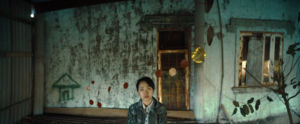
Still from “The Unburied Sounds of Troubled Horizon.”
VP: On the same vein of humor, and despite the horrors, there is also something dark and beautiful about the aesthetic of destruction. We see a lot of this in twentieth-century work dealing with the World Wars and all the postcolonial work, I think, in some way also deals with this tension. Destruction is horrible, yes, but it also creates room for rebirth or repurposing. Here I am mostly thinking about “The Unburied Sounds of Troubled Horizon,” which to me is a poetic reimagining of how we recycle the vestiges of war. In essence, there is a process in which we beautify things that are damaged or not beautiful, which can lead to some strange criticism from people. Because of this, are you ever concerned that someone might accuse you of over aestheticizing trauma and destruction? Is it a concern?
TAN: That’s a great question. I’ve never been accused of over-aestheticizing. My actual aesthetic is very minimal. I think there is a balance between elegant objects and what it holds in regards to its history, its previous life. That is a hard balance for me to walk sometimes. I’m so fascinated with the way things are here. Everything is very temporary. Everything is make-shift and Mickey Mouse because no one really believes that they should spend the extra time to make things look polished in a certain way, or to be held together for any duration than is necessary. It is a very pragmatic aesthetic. But the kind of forms that come out of that, that intentionality, that temporality sometimes blows my mind.
I’ll walk down the street and someone would have made a sign out of a piece of concrete they have found lying around with bamboo poles and rope tied around it. It becomes this really elegant sculpture, very much in the line of Western masters. I just think, wow, if we took that and put it in a museum, and jokingly put Rauschenberg or Donald Judd’s name on it, people would believe it. I like those moments. They challenge me. They have the potential to challenge our notions of Western art history. I aspire to do that. I aspire to do what people do on the streets here.
I think this is the reason why I don’t think it is ever over-aestheticized, because it is subdued. But behind that is the weight of the story, which for me is an important element in the power of what an object can be. As humans and consumers, I think we are very obsessed with objects, with things we have: our cars, our motorbikes, our watches, our phones, things that have been handed down by our grandparents, our great-grandparents. But beyond the consumerism aspect of it, I think we are obsessed with the stories that objects hold. Every object has a story whether we reject or accept that idea. Your earbuds have a story, and it’s your story and your relationship with that object.
VP: Hopefully, this last question is more inspirational…
TAN: All your questions have been inspirational [chuckles].
VP: For young aspiring artists who are trying to learn more about the artistic space, I am thinking mostly of Asian-American artists, who are trying to do the important work that you’re doing—not just self-exploration and building community— what sort of advice would you give them or to your younger self with everything you know now?
TAN: What advice would I give my former self? Be daring. I was always afraid to offend people, even though I did offend people. Listen to yourself. We get so mixed up in the noise of society, the noise of the art world, the noise of friends, critics, structures, professors, and everybody… It’s so easy to lose yourself. You have to trust yourself.
I did a project in the Great Sandy Desert in western Australia, and I worked with the Ngurrara people in a town called Fitzroy Crossing. They asked me, “why are you a Vietnamese person wanting to tell our story?” and it caught me off guard because on paper, I have nothing in common with the aboriginal peoples of the Great Sandy Desert. But I was drawn to their story because I felt so close to them. Their story is a story of migration. It is a story of forced migration because of colonialism. It was the Australians and Brits that forced them off their land onto cattle-herding farms. Because of this migration, their sense of purpose was to get back to the desert, to understand their ancestral connections to the land through the watering holes […] I was kind of thrown off when they asked me that question. But it came to me so easily this response—I know what it is like to be separated from a place and I felt so close to them. So the moral of the story is just to be yourself, you have so much nuance and understanding. Your understanding of the world is there, whether you went to art school or not, whether you’ve done your MFA, whether you’ve done a PhD. As an artist, you have these sensitivities to the world that you have to trust.
VP: That is very inspirational.
TAN: Yeah, I hope so [big smile].
VP: Thank you so much again for your time.
TAN: Thank you.
…

 Politics & Economy3 years ago
Politics & Economy3 years ago
 Society & Culture4 years ago
Society & Culture4 years ago
 ARCHIVES4 years ago
ARCHIVES4 years ago
 Politics & Economy3 years ago
Politics & Economy3 years ago
 Politics & Economy4 years ago
Politics & Economy4 years ago
 Politics & Economy3 years ago
Politics & Economy3 years ago
 Politics & Economy4 years ago
Politics & Economy4 years ago
 ARCHIVES3 years ago
ARCHIVES3 years ago
